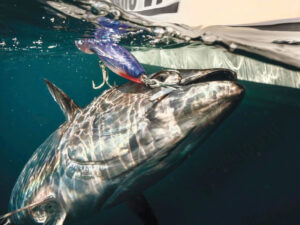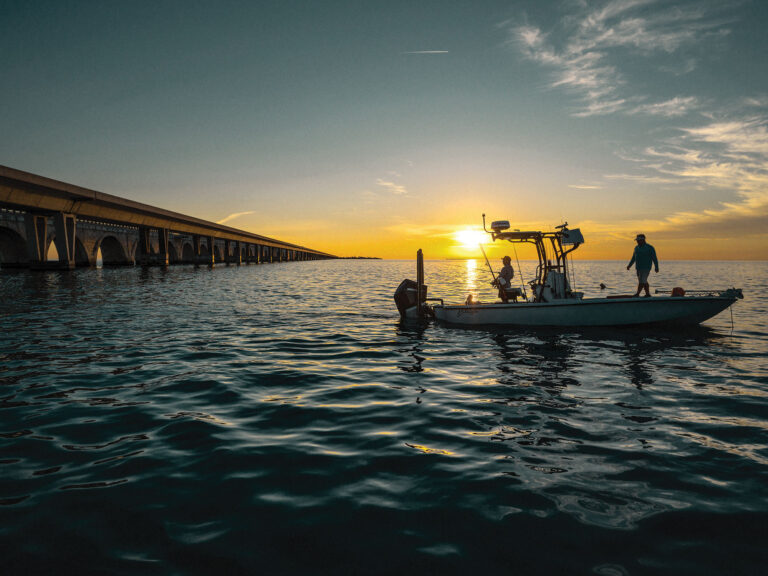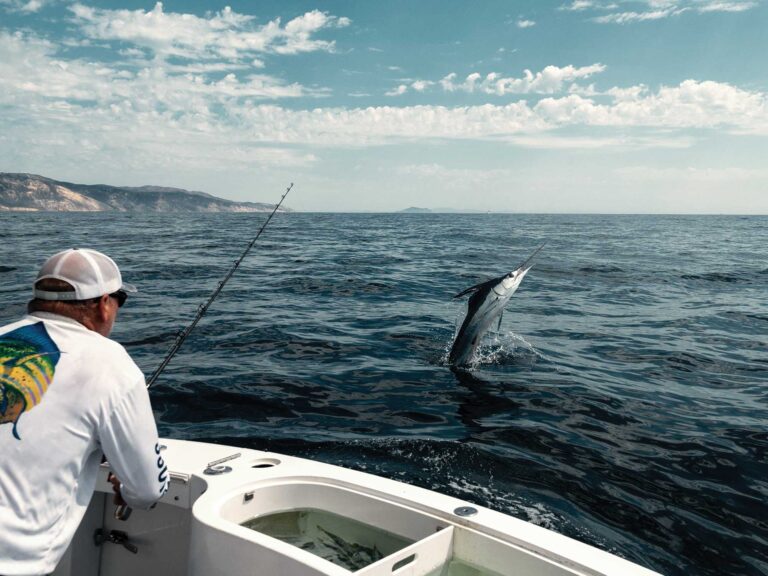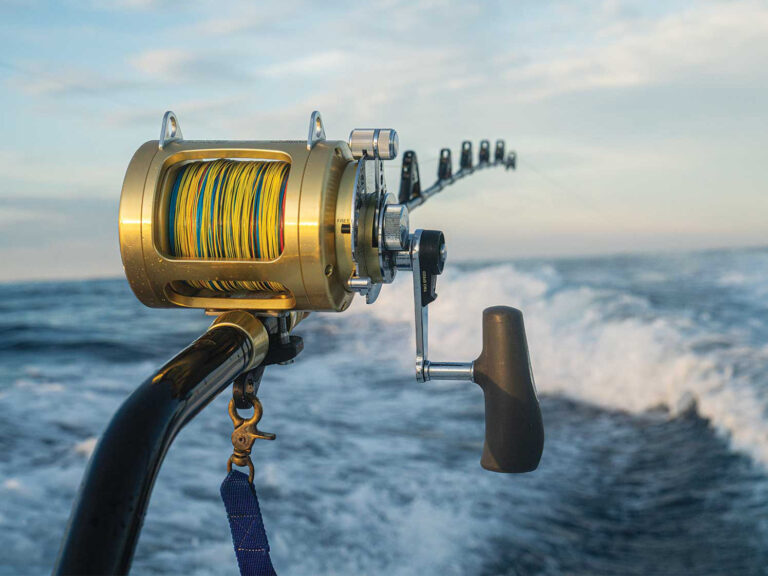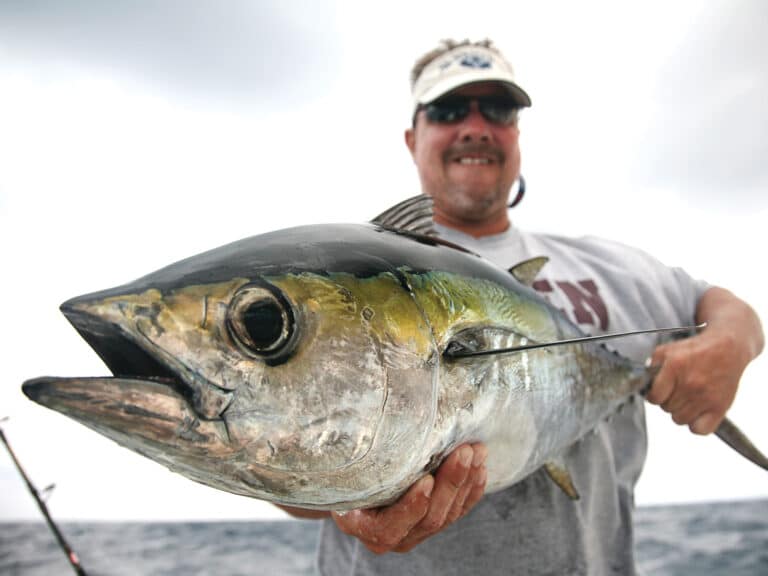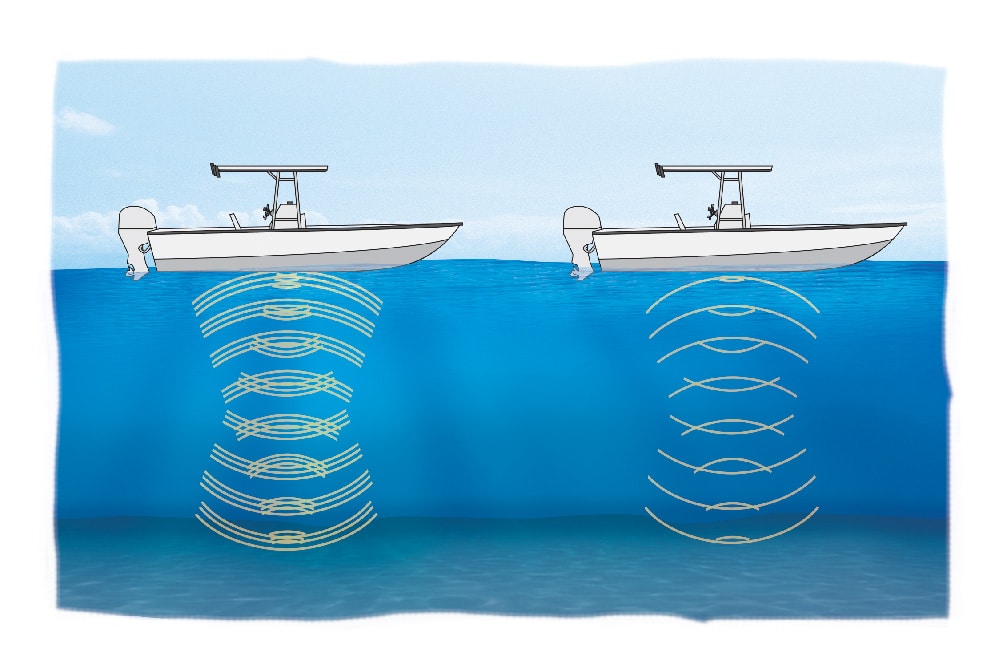
Every boating angler who’s shopping for a new down-looking fish finder today will face this question: Should I switch to chirp or stick with conventional fish-finder technology?
Fish finders that operate on single-frequency bands — usually 50 and/or 200 kHz — were considered state-of-the-art when I bought my first saltwater fishing boat 30 years ago. Today, these systems still help boating anglers find lots of fish, but they are now considered traditional.
Chirp technology emerged about eight years ago and is gradually taking over. Today, you can find many fish finders (usually integrated into or networked with a multifunction display) using this technology. Some MFDs such as the HDS Gen3 series from Lowrance or Axiom Pro from Raymarine offer the option of using traditional and/or chirp in a single unit.
Chirp technology requires its own specialized transducer, and ultimately, it allows you to find and catch more fish than with traditional fish finders. I know that from experience. Yet some boating anglers have been slow to switch. Until recently, that included me.
Cost of Change
There are obstacles to changing over, mostly based on cost. You might need to buy a new chirp-capable MFD, as well as a new transducer. Both can be expensive. Installation of new transducers run the cost even higher, particularly on boats that need to be hauled out to complete the work.
In my case, cost was only part of the equation. I also hesitated to give up the comfort level of the traditional system I had employed successfully for decades. I’ll venture to say that many captains possess the same reluctance.
Yet I did change, and in my case, there was a trigger — the quest to find and catch more tuna — that set things in motion. It began when I installed a new MFD, one compatible with both traditional and chirp technology. I was initially using the old 50/200 kHz transducer.
Seeing Is Believing
After one trip offshore, I was disappointed. My new fish finder failed to show any tuna on the display, despite the fact that I could eyeball a number of them under the boat as we chummed the fish into a feeding frenzy.
OK, with fishing like this, who needs a fish finder, right? But still, it bothered me because there are days when tuna feed deep and become hard to find, and that’s where a good fish finder can help. I talked over the issue with a number of experts from marine electronics companies, and many pointed out that tuna (despite what you might see on TV shows where captains are often “marking” fish) can be difficult to detect with traditional sonar.
Tuna have relatively small swim bladders, so sonar signals don’t bounce well off these pelagic fish. Tuna also move swiftly, so they typically don’t stay within the cone of the transducer beam for long, and that makes the marks relatively small.

This is one area where chirp really helps. The wider bandwidth and advanced digital signal processing in the fish finder are better at defining weaker signals from fish such as tuna.
Chirp Technology Choices
So, I made the decision to install a chirp transducer. Before selecting the specific model, I talked over the situation with the engineering experts at Airmar Technology Corp., which manufactures the vast majority of transducers used with today’s fish finders.
Airmar engineers posed a number of questions about my fishing style before recommending one. Therein lies the rub, for chirp technology has resulted in more transducer models than ever. The choices can be boggling.
Before you pony up for a chirp transducer and install it, talk things over with a marine electronics expert to make sure you get one that best suits your style of fishing. The transducer I chose was an Airmar B175HW, which transmits and receives over a frequency range spanning 150 to 250 kHz. This bandwidth is ideal for most of my fishing, which takes place at depths less than 300 feet.
The beam angle is 25 degrees, which is also much wider than the 12-degree beam of my old transducer on 200 kHz mode, so now I can see tuna much better as they dart under the boat.
Transducer Decisions
The best frequency band for your chirp transducer hinges on your style of fishing and your expectations.
For spotting swordfish to depths of 10,000 feet, for example, you want a much lower frequency. In this case, you might want a transducer such as Airmar’s R509LM, which transmits on a chirp bandwidth spanning 28 to 60 kHz. This frequency range allows you to see fish at such great depths.
The R509LM has a second, medium-frequency chirp channel that transmits a bandwidth of 80 to 130 kHz for fishing shallower. There are downsides to such top-end chirp transducers. For one, they are big. My flush-mounted tilted-element model, for example, requires a 3⅞-inch-diameter hole in the hull to install. Some are even larger and not well-suited to boats under 30 feet.
Top-quality chirp transducers are also expensive. Retail for the B175HW is around $1,300. But if you’re serious about seeing pelagic fish, a top-of-the-line chirp transducer is worth the investment.
Chirp Advantages
An acronym derived from radar systems, chirp is short for compressed high-intensity radar pulse. Essentially, this technology transmits a broad band of frequencies (such as 150 to 250 kHz, for example) simultaneously. Microprocessors then interpret the subtle differences in the returning signals, letting you see underwater targets with greater definition on the screen than with most of the traditional systems.
What is RezBoost?
RezBoost is a technology developed by Furuno that uses advanced digital signal processing to increase resolution to levels comparable to chirp, but by using select compatible 50/200 kHz transducers.
Available with Furuno NavNet TZtouch2 multifunction displays, RezBoost produces fish targets and images eight times sharper than those of traditional fish finders. In many cases, you can use your older 50/200 kHz transducer, which negates the need to purchase and install a new chirp transducer, yet you still get chirp-like performance.

